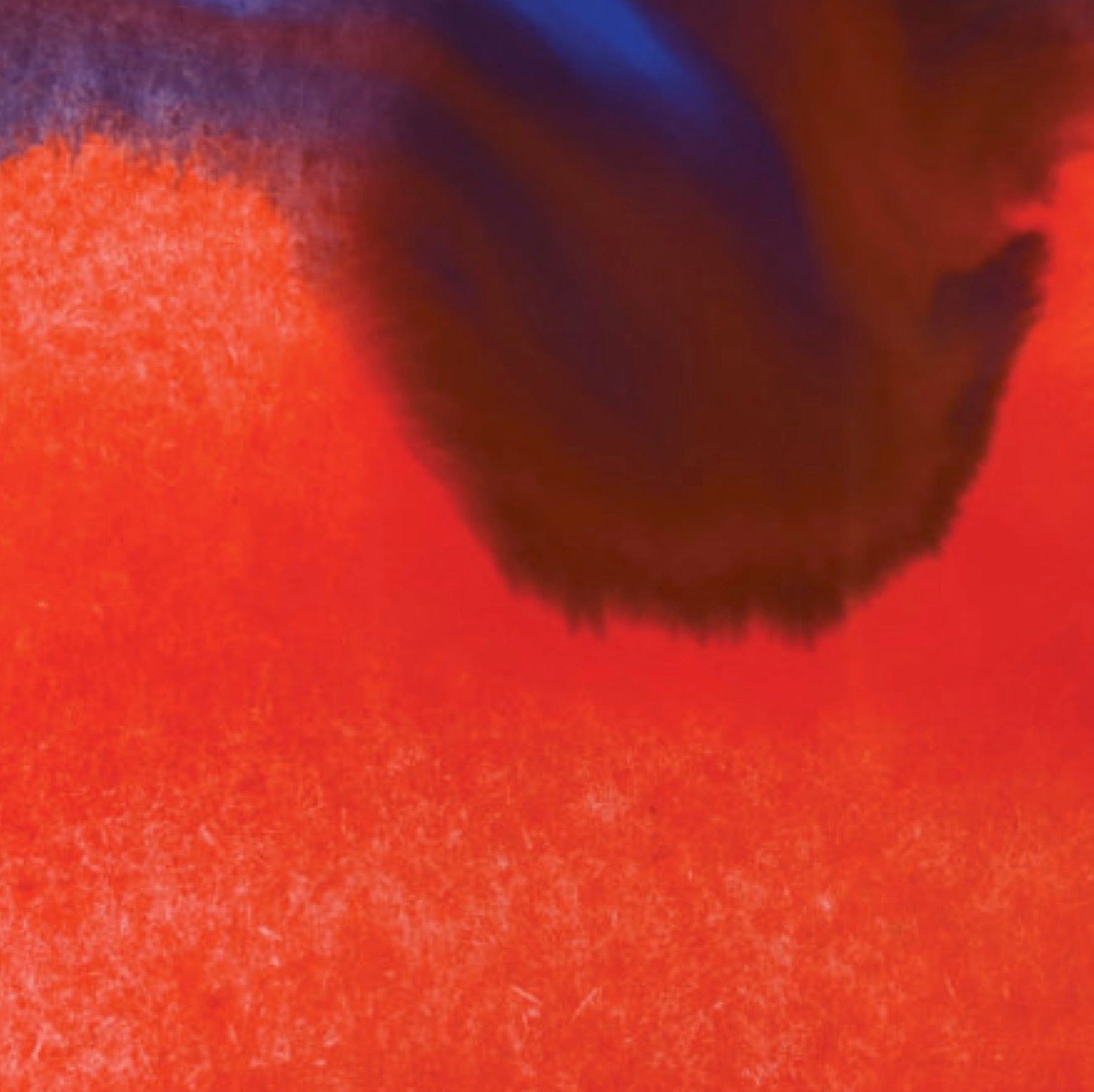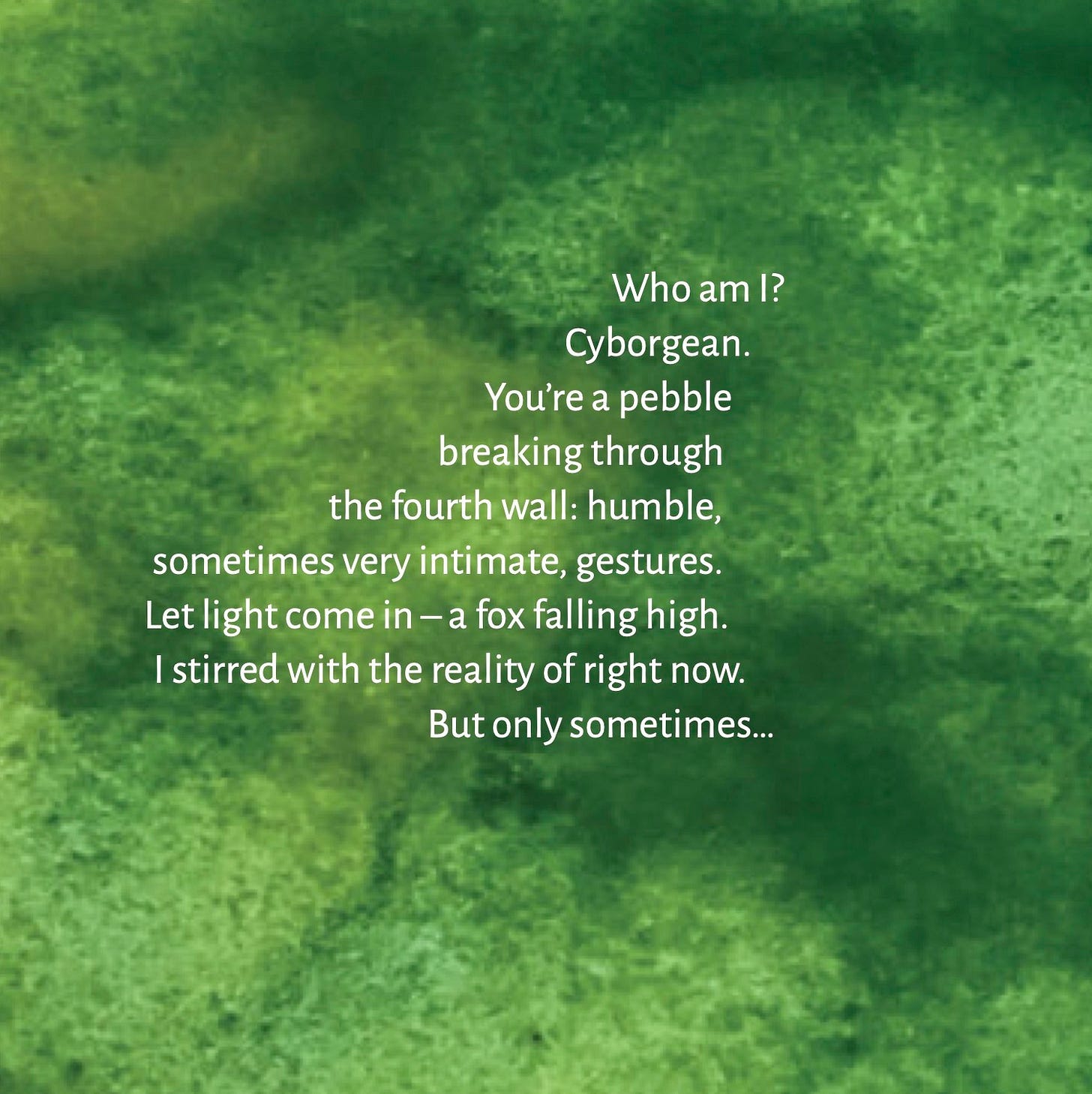Trails of imagining
An improvisation on process, connection, life and colours changing
The latest Unpsychology Magazine is a strange thing – a curation of imaginings. How to further describe it? How to whet your appetite for the rich meal within its pages? How to avoid the usual ‘sell’ – the marketeers ‘pitch’?
We live in and with markets, so no avoiding that, perhaps, but in the conjuring of this web, this ecology, this mesh of creations, might there be another way of intriguing you to download or pick up your copy of it in print?
There is a small exchange – a transaction of sorts – but we’d be happy for you to just to spend some time savouring its flavours and concoctions.
With love from the Unpsychology editors… Steve, Julia, Patrick and Lesley
Fabrics of life, fragments coloured red
The first part of anything is not necessarily the beginning. The way things are organised is, however, at the heart of being human, being creative, being in relationship.
So, what we have is what we have; and what we will have depends on the places and frames we have created – inadvertently or with conscious purpose. Either way, what emerges will not be what was intended.
Also, there are pathways from this temporal reality that head in many directions at once. Some will arrive at places I will never know exist. Others are familiar and more predictable, but nevertheless strange.
These fragments – extracts from pieces of life1 – combine in unforeseen patterns. One of these might be the poem that begins each section in the latest Unpsychology Magazine (Imaginings). Yet the patterns are everywhere – coloured red, yellow, green, blue, mauve – combinations of these and transitions between them.
Words are combined to create temporary introductions to whatever lies beyond and within. Sense is made in a moment, fades when the moment has gone. All these imaginings shift through the implications of red. They carry revolution, heat, science fiction, science and the crimson balls of poetry. And song. And art. And improvised music. And meetings of minds in which patterns are woven.
Other humans, with names and faces
Sometimes, it is time to pause and reflect on what it is to be human. Not what it means, but what it is. Just to be. A person. A daughter. An artist. A dreamer. A gatherer. A reader. A worker. A human being of diverse orientation and perception. All of these. None of these. All at once. Sometimes. In this moment.
Humans grieve and cry alone. We have a subtle ability for perception – that may or may not be unique – but the articulation of which might be.
When we are in the world, the queerness of it all is there for all of us to see – and to be. Some of us choose this. Others shut it out. I know I cannot judge you for this, but you may miss the texture of things – and this might be an important part of being a human.
We have names and faces. Our expressions of our selves crawl over pages, searching for a space in which meaning will be made. Our art is tapping essence. Our maps are dropping pins in places where journeys might begin. Or end.
My face is, in the words of another human, a spoiled soul2 – like a body drowned in an ocean that is too vast for us. Our mothers and fathers are dying; that realisation might be big enough for all of us.
Weaving cyborgs, ants, squids and visions
Who are we? Cyborgean. That’s an unexpected answer. We all want to be human – to not be other-than. Other-than-human means being an ant or an AI or a robot or a different human. And none of us wants that. Do we? We don’t want artificial, plastic lives, but we don’t want to be short-lived scrabbling mini-beasts either. We don’t want to be ‘othered’, but we want to be ‘ourselves’. It’s a dilemma.
We are already cyborgean, of course. We are enhanced and conjoined by and with other beings and bits of beings. Some no-life things become part of our life – sometimes keeping us alive. Other living things live with and within us – and each other. They are symbiotes, or pests, depending on our perspective.
We imagine what it would be to be other-than – to give voice to the non-human in us and in our world. It’s their world, of course, they don’t need our permission, but it suits some of us to adopt the roles of steward and advocate. Which might just be the flip side of extractor and exploiter – emerging from the same binary world view.
Flip it another way and we live with whatever. ‘Critters’, ‘Habitants’ or ‘Strange Strangers’3. Cyborgs, animations, enhancements or even AIs. They’re all here. They can’t be erased… or saved.
Dreams, shadows and strange puzzles of the city
There’s a dilemma in the way we think of the world. Innovation lies in the maze of the city. We love to get lost in its ideas and jumbles of shape-shifting architecture. There lies excitement and creation. There also lies pandemonium.
I dream of cities. Or I dream in cities. I am not entirely sure. I dream also of the bubbles of space and the stars. I wander streets and lanes, discovering connections, becoming aware of dark places – perilous corners of shadow that I then avoid. Have always avoided.
Our present and our past are all about belonging – where we have and have not fitted. Where the social ecology has held us and where it has let us down. And the dream reveals the mirror worlds where up is down, and sense is inverted. Sometimes there’s a glimmer of insight from these places, but stepping into the mirror is a dangerous act.
Safer is a contemplation of love and time. Place both of these in the mesh and flow of life, and they play out in the ways they should, like drops of pigment in trays of water, shaping beauty in unexpected ways. Cities can be like this too.
Conversely, pristine nature seldom exists in the ways we would like it to. To survive its precariousness, perhaps start with dreaming.
Strong seasons and new sanities
I write this in Autumn. Here, westerlies blow through, sweeping sand and leaf and hill and memory into another cycle of futures. We can only imagine when the season is strong in our minds, when the search is for the landscape at the centre of things.
The old landscape was someone else’s in any case. The colonies were not colonies many Autumns back. The trouble was not this trouble back then. The sanities we live with were born out of a craziness of eugenics, capital and conscious purpose.
Still, we are where we are. Caught in tangles of history and hope that need careful labour. Patient work to separate the strands – disentangling the threads of trouble from the future’s salience.
Seasons hold a memory in us all. We know what these rhythms mean – perhaps deep in our being; certainly embedded in our recollection of life. However, somewhere in the universe, I think there is another story being told. A different story on a world with different seasons.
If we improvise our imaginings, we may find ourselves there, living within strange alien mythologies that can help us “reconnect what has been scattered”4.
Perhaps I’ll meet you there…
Notes
The found poems at the front of each section in Unpsychology 9.1 combine fragments from the authors/contributors in each section.
Spoiled soul - a wonderful fragment phrase from Annanother: poems by Anna Nygren in Unpsycholoy 9.1 Imaginings.
Donna Haraway calls her living other-than-humans ‘critters’ in Staying with the Trouble; Timothy Morton calls them ‘strange strangers’. In my Watertime stories, they are ‘Habitants'.
“The lesson of mythology may be, in part, to reconnect what has been scattered” from The Lost Coast by Drew Champion.










